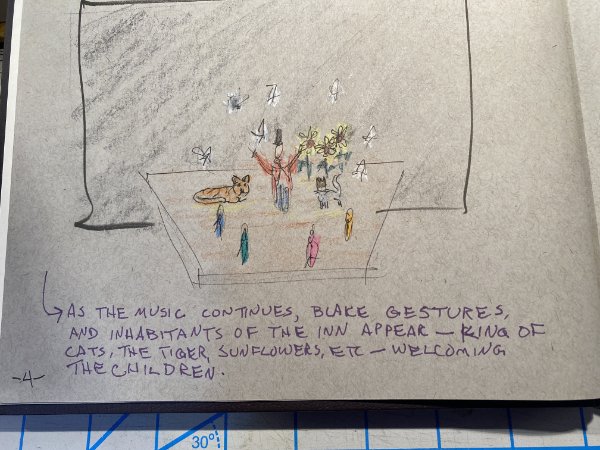I'm back!
/I spent the last ten days tromping around Germany, slogging my way through Munich’s 90-year snowstorm and various Christmas markets, all the while failing to find a single bartender who even knew what a Manhattan was.
screenshot from google streetview / thanks, Julian A. Kramer!
It was not all holiday jollity, of course. One of the unspoken dogmas of the Lichtenbergian Society is that if there is a pen/stationery store, you are obligated to go in. So when we saw a Mont Blanc store at the Sendlinger Tor Platz in Stuttgart, in we went.
You will of course know what’s coming, but I can explain. Yes, it is true that I have an incredible number of journals/blank books at home that I could use for any reasonable purpose, and in fact I’ve already started one for William Blake’s Inn. But then I saw this beauty:
A Leuchturm 1917 journal, with 250pp. of dot grid paper, two ribbon bookmarks, an elastic closure plus an optional elastic pencil holder plus a cool little travel set of various writing implements (not pictured). How could I resist?
Remember that I had already started a journal for William Blake, so what was the thinking behind this new one?
I was not completely happy with the other journal. The paper is a little too thin for my fountain pen to write on without showing through, and it doesn’t lie flat enough to make it comfortable to write in. Plus, it’s a literal blank book: the pages are not numbered, and for tidiness’s sake I have to use a template with ledger lines behind each page to keep my handwriting from getting out of control. It just wasn’t giving me a THIS IS THE WAY vibe.
Therefore I’ve devised a divide-and-conquer system of WASTE BOOKS. (Just like Beethoven: see pp. 31–32 in Lichtenbergianism: procrastination as a creative strategy.)
The new notebook will be my random production ideas, with an index in the back for each piece, subdivided into Personnel, Staging, and Technical topics. I have a table of contents up front to guide us to each index:
Then, as ideas come to me, I can scribble them into the notebook, restricting each page to a single song for simplicity’s sake. So far I have only a couple of ideas transcribed, so the example is a bit sparse:
We’ll talk about this idea on Wednesday
Then, as in my cocktail notebook, I go to the index for that song and note the page and idea:
You might be amused to know that I began this WASTEBOOK, creating the indices and table of contents and scribbling the first note, over a gin and tonic in the hotel bar in Stuttgart last week.
I felt like Cole Porter in Paris ’33 or something. Shostakovich in Leningrad ’40? Somewhere in there.
The former notebook will now be my personal journal of the process of getting from here to the premiere performance in 2025. Separating the two threads into two WASTE BOOKS means I can be as honest as I need to be about any frustrations I’m experiencing without having to risk sharing them when I need to discuss production design ideas with the possible subjects of that frustration.
BUT WAIT, THERE’S MORE!
Seven years ago (!) I started another WASTE BOOK to help me visualize what a staging of William Blake might look like. Remember that the thing was originally written as a song cycle, kind of, albeit one that was always meant to be staged… somehow. This notebook was an attempt to start thinking of ABORTIVE ATTEMPTS at staging.
(N.B.: These sketches were not meant to be THE ONLY WAY the show could be staged; they were just to get my ideas going as a basis. The workshop will certainly come up with further, more betterer ideas.)
In fact, it was the memory/visual of this notebook that spurred my most recent thinking about staging, so even though I only ever did the “Prelude,” the concept of sketching and notating was already in my head as a framework.
To recap:
A paperback journal, size A5, some 300 pages, for my personal reflections/plans/rants about the process
A hardbound journal, size A5, 250 numbered, dot-grid pages, for random ideas/designs/considerations for the actual staging of each song; indexed
A hardbound journal, 8½” x 11”, ≈100 heavy gray pages, for actual visualization of the ideas found in journal #2, something I can show people who might need a specific picture of how a moment will look
And of course often the ideas I write into journal #2 will have been scribbled first in my day-to-day WASTE BOOK in my back pocket. It’s WASTE BOOKS all the way down, folks.
Turn turn KICK turn, YES IT WILL WORK!











